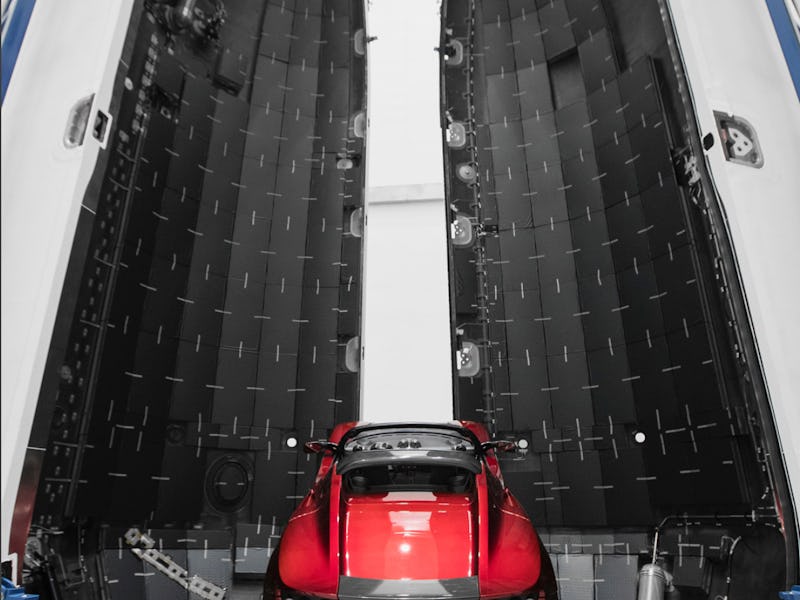Elon Musk Makes It Official: Falcon Heavy is Taking Tesla Roadster to Mars
“A Red Car for the Red Planet.”

What sounded like a prank when SpaceX CEO Elon Musk first floated it earlier this month became real Friday: His car is headed to outer space.
Musk confirmed on his Instagram that the long-awaited first flight of SpaceX’s Falcon Heavy rocket in January 2018 will carry Musk’s own midnight cherry-colored Tesla Roadster as its payload.
Mars is the mission’s destination, though it won’t actually be touching down on the Red Plant. It will instead be going into a billion-year orbit around our planetary neighbor.
Oh, and Musk revealed his car will be looping David Bowie’s “Space Oddity” — a favorite of at least one astronaut — throughout the journey. It’s a fitting anthem to this monumental mission, though presumably he is saving “Life on Mars” for when SpaceX starts building Musk’s planned Martian’s settlement.
All of this was tweeted out by Musk on December 1. But the tech mogul is known to have some prolific Twitter fingers, leading observers wondering if this was nothing more than a joke.
After all, the Falcon Heavy’s launch has been pushed back several times, so it would be understandable if SpaceX carried out the mission in as straightforward and low-key a way as possible. But in classic Musk fashion, he has decided to go with the flashier approach.
Any doubts that Musk wouldn’t be rocketing his Roadster into outer space were quelled Friday. He posted pictures on Instagram of his electric car situated between rocket’s payload fairings, which are the blast shields found at the tip of the rocket that are used to protect payloads.
Regardless of what’s inside the Falcon Heavy, a successful launch would break records in the aerospace sector. Its 27 Merlin engines are capable of generating 5.1 million pounds of thrust at full power. This would make it the most powerful currently operational rocket in the world. Musk recently three three Falcon Heavy photos that show its massive size.
SpaceX also plans to be able to recover the rocket cores used for this test launch, allowing them to continue using this rocket for future space missions to the moon and Mars. If all goes to plan, all three boosters will land upright back on Earth, Musk teased on Twitter recently: “Two cores return to base doing synchronized aerobatics. Third lands on droneship.”